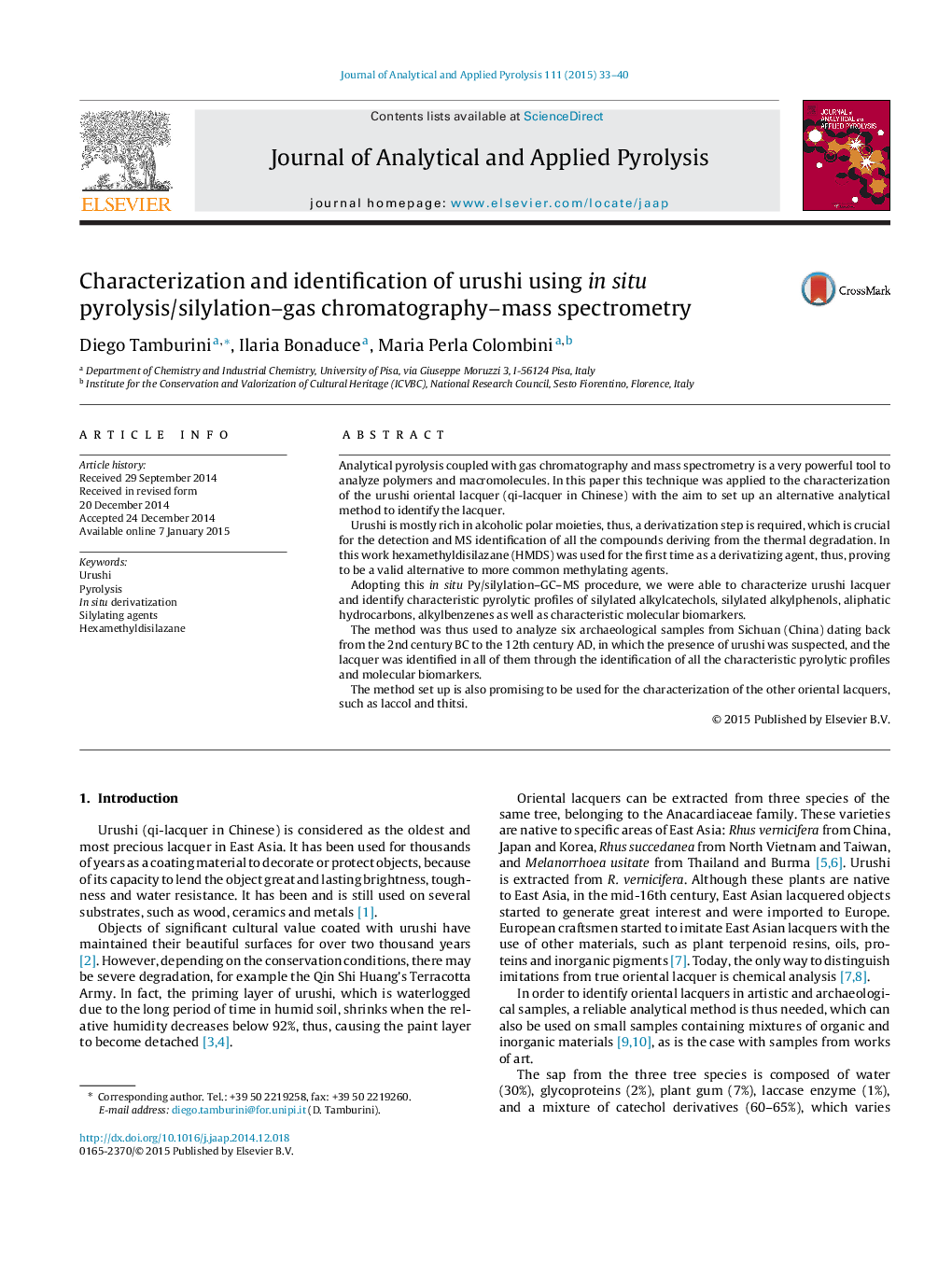| Article ID | Journal | Published Year | Pages | File Type |
|---|---|---|---|---|
| 1196700 | Journal of Analytical and Applied Pyrolysis | 2015 | 8 Pages |
•In situ thermally-assisted Py/silylation–GC–MS was used to characterize urushi.•Hexamethyldisilazane (HMDS) was used as silylating agent.•Characteristic pyrolytic profiles and molecular biomarkers were identified.•Lacquer samples from archaeological objects (2nd century BC) were analyzed.•Applications to other oriental lacquers are planned.
Analytical pyrolysis coupled with gas chromatography and mass spectrometry is a very powerful tool to analyze polymers and macromolecules. In this paper this technique was applied to the characterization of the urushi oriental lacquer (qi-lacquer in Chinese) with the aim to set up an alternative analytical method to identify the lacquer.Urushi is mostly rich in alcoholic polar moieties, thus, a derivatization step is required, which is crucial for the detection and MS identification of all the compounds deriving from the thermal degradation. In this work hexamethyldisilazane (HMDS) was used for the first time as a derivatizing agent, thus, proving to be a valid alternative to more common methylating agents.Adopting this in situ Py/silylation–GC–MS procedure, we were able to characterize urushi lacquer and identify characteristic pyrolytic profiles of silylated alkylcatechols, silylated alkylphenols, aliphatic hydrocarbons, alkylbenzenes as well as characteristic molecular biomarkers.The method was thus used to analyze six archaeological samples from Sichuan (China) dating back from the 2nd century BC to the 12th century AD, in which the presence of urushi was suspected, and the lacquer was identified in all of them through the identification of all the characteristic pyrolytic profiles and molecular biomarkers.The method set up is also promising to be used for the characterization of the other oriental lacquers, such as laccol and thitsi.
